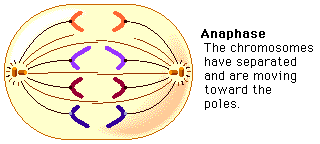Death Leads to Life
You are born with nearly twice as many neurons in the brain as you have today.
So are newborns smarter than you and I?
No. In the first few months of life, your brain cells start to make connections with each other. Neurons that make strong connections survive, and those that make weak connections die.
Then why does the brain make twice as many neurons as a person needs?
The exact answer is not entirely understood, but it has to do with homeostasis.
How?
Well, you want the fittest neurons to increase your chances of survival. Therefore, the fetus develops more neurons so that natural selection can select neurons with higher fitness.

So how does this relate to homeostasis?
Good question. Our cells have a lifespan of a few hours (specific white blood cells) to a lifetime (heart muscle cells and neurons). Our cells have genes that code for a self-destruct button. When our cells reach the end of their lives, they initiate the self-destruct sequence and die.

So if we lose cells, how do we grow?
Growth occurs when a cell divides into two new genetically identical cells instead of self-destructing. We call this division mitosis.
Wait, don’t you mean meiosis?
No, mitosis is correct. Meiosis is the process that creates gametes (sperm and eggs), which are genetically different from the cell at the start of the division. Mitosis produces two genetically identical cells that are genetically identical to the cell at the start of mitosis. Mitosis is how all the cells in your body (except gametes) reproduce.
So we grow and repair our tissues via mitosis, and we make gametes for sexual reproduction by meiosis?
Correct. Let’s take a look at the process of mitosis.

The Cell Cycle
Your cells go through a cell cycle that extends a few days (cell lining your small intestine) to a lifetime (neurons). There are two major stages within the cell cycle: Interphase and cell division.

Interphase
Interphase is the longest phase, and this is when a cell grows and prepares for cell division – that is if it divides. Assume a generic cell has a cycle that spans 24 hours. The cell will spend 23 hours in interphase and one hour in cell division. Therefore, cells spend most of their time growing and preparing for cell division.

Interphase comprises three stages:
- G1 phase= Cell growth (longest phase)
- S phase = Replication (copying) of DNA; a copy of each chromosome is made
- G2 phase = Preparation for cell division

Cells that do not divide enter a G0 stage after growing and will never go through the S phase of the G2 phase.
The nucleus is intact, and the chromosomes are not visible during interphase. However, the chromosome will be visible during cell division because they condense during the G2 phase, and the nucleus disappears during cell division.
Cell division
The first phase of cell division is mitosis. During mitosis, the chromosome copies separate into two separate nuclei. Mitosis occurs as follows:
| Phase Name | Major Events in Each Phase | Picture of Phase |
|---|---|---|
| Prophase | The chromosomes become visible and the nuclear membrane disappears | |
| Metaphase | The chromosome line up across the center of the cell |  |
| Anaphase | The chromosome copies separate and moves to opposite ends of the cell |  |
| Telophase | Two new nuclear membranes form, each around the separated chromosome copies |  |
Cytokinesis is the second stage of cell division, and it begins during telophase. Cytokinesis means to split the cytoplasm, which it does, forming two new cells. The splitting of the cytoplasm occurs between the two nuclei created in telophase so that each new daughter cell will be clones of each other and the cell in which they came.
Cytokinesis in Animal and Plant cells
Animal and plant cells go through cytokinesis but in different ways. A cell membrane surrounds an animal cell, forming a cleavage furrow and splits in the center and, voilà, two new daughter cells.
A cell membrane and a cell wall surround a plant cell. The outer wall is rigid and cannot cleave. The plant cell forms a new wall between the two nuclei, called the cell plate, which looks like a crack in the ice. The crack (wall) grows until it splits the cell in two.
